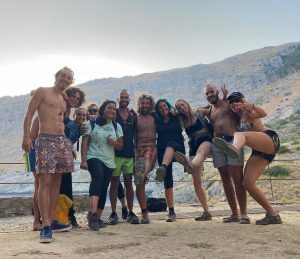Updated on September 1, 2022
Field-trip to the Aquarium of Naples
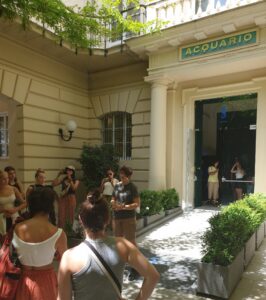
The commonly called “Aquarium of Naples”, located in the Villa comunale, is a part of the Stazione Zoologica of Naples created by Anton Dohrn in 1872, with the scope of studying marine life as part of the evolutionary science. In fact, Anton Dohrn and Charles Darwin were having a rich correspondence and close collaboration.
The Aquarium is one of the oldest structures of this type in Europe, being open to the public since 1874. The Stazione Zoologica and its aquarium were very advanced for their time, allowing biologists researchers to discuss between them, have access to material and labs but also to get funds and to diffuse knowledge to the public.
The display of species is made in a way to allow going through the different marine habitats of the Mediterranean Sea and more particularly the Gulf of Napoli, with also another focus on its invasive species. One of the particularities of this aquarium is also the fact that the water of the tanks is collected directly from the Gulf which is located a few meters way, and its display of Roman artefacts in the tanks are authentic local archaeological pieces.
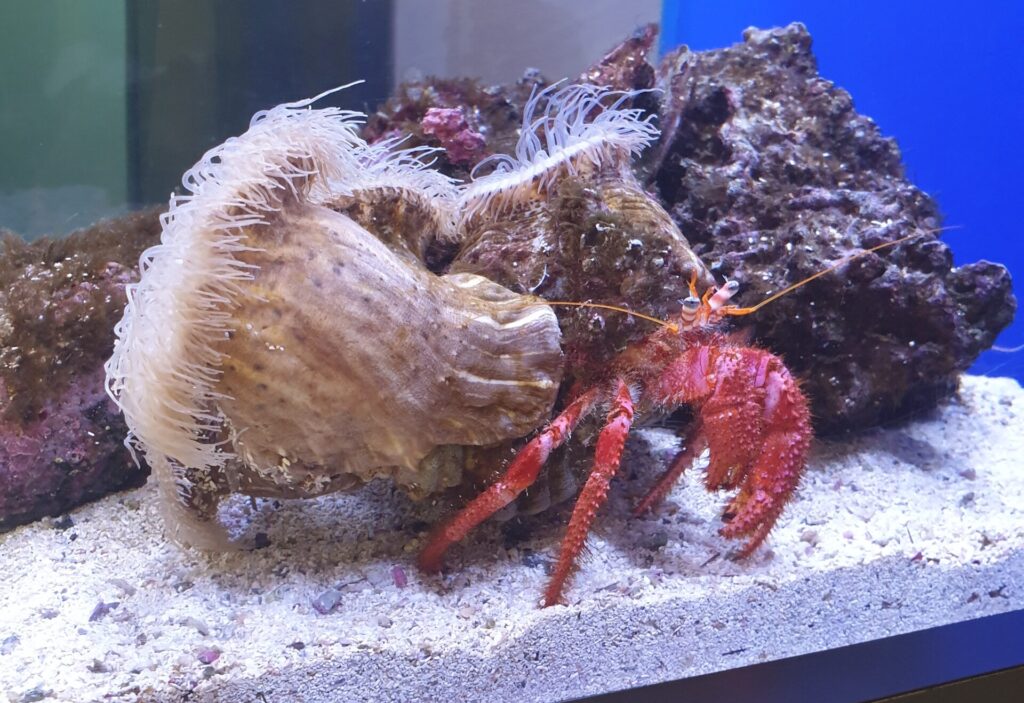
When we entered the aquarium, the first thing we saw was a hermit crab in symbiosis with anemones, then we accessed a large white-walled room composed of many windows with small black columns, indicating the ancientness of the building. Through these windows can be seen all the different tanks and the various habitats of the Gulf of Naples.
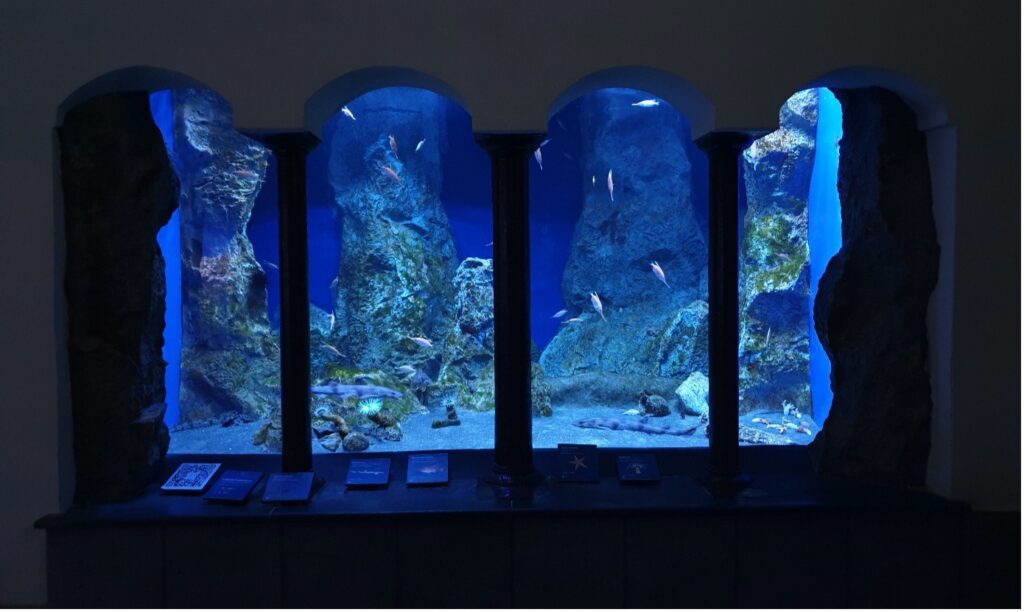
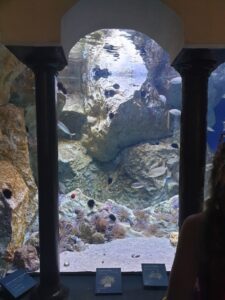
First, we observed closely the shallow water surface habitat [depth: 0-1/2m; temperature: 13-28°C], and saw male sea urchins, Mediterranean snakelocks, benthic blennies and gobies with coloration patterns matching their environment. We also observed the very common Sarpa salpa (cow bream) and the rather solitary beadlet anemone (Actinia equine).
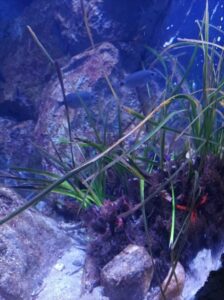
Secondly, we looked at the Posidonia meadows [depth: 0-30m]. The Posidonia oceanica is providing substrates for the fishes, stabilizing the sediments with its roots and contributing to fight erosion of the bottoms as well as the shore when it drops its leaves every 6 to 10 months. In this habitat, we could also observe a tunicate (sea potato), which acts as a sea filter; as well as white sea breams (Diplodus sargo), which are very closely related and adapted to the Posidonia meadows. Finally, we talked about two other fishes whose the ratio between them help to measure the effects of the climate change on the Mediterranean : the ornate wrasse (Thalassoma pavo) which is thermophile and so gaining benefits from the rise of temperatures, and the Mediterranean rainbow wrasse (Coris julis) which prefers the temperate waters.
Thirdly, we caught a glimpse of the rocky environment [depth: 30-40m; temperature: 15-24°C], including parrotfishes (of the genus Sparisoma) which used to leave in the Southern part of the Mediterranean but they lately became very common in the Gulf of Naples. Black scorpion fish (with venomous spines) and sea cucumbers were also present.
Then, we admired the coralligenous habitat [depth: 40-200m; temperature: 15-24°C] covered with yellow cluster anemone (Parazoanthus axinellae) – which can be found in Ieranto bay, in the deepest part of the bay –, and violescent sea-whip (Paramuricea clavata) – which is a coral without a hard external structure. The animals present in this habitat have a modification of their shape that is fit to places that waves are not affecting. The low visibility of the deep sea also affects the colour of the species living there.
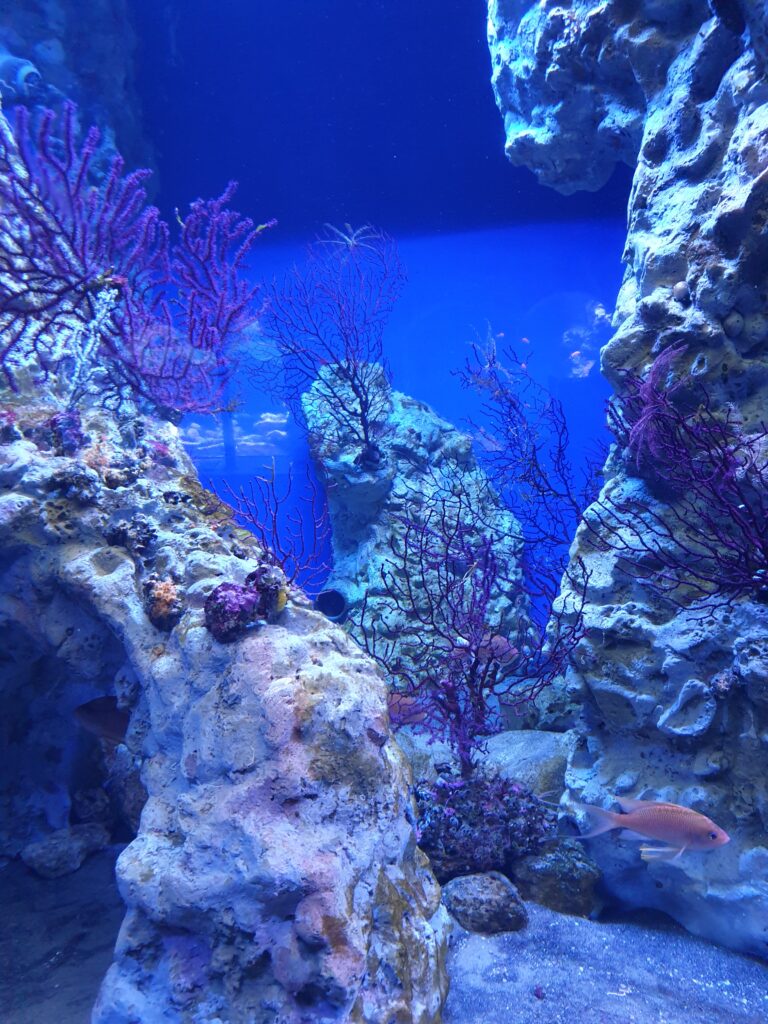
After, we looked at the continental shelf bottom [depth: 40-200m; temperature: 15-18°C] with a presence of small spotted-dogfishes which is a type of shark living in the bottom. We could admire the hatpin urchin, which constitutes the only species of urchin enjoying temperate waters and it is now very endangered. This species is also a relic of the past close connection between the Red Sea and the Mediterranean. In this habitat many longspine snipefishes were also visible, with their characteristic elongated nose used to help them eating.
Then we reached the open waters [temperature: 15-26°C]. In these tanks, we were able to see some combers, which are very territorial and opportunistic fishes, eating the remains of the octopus’ food. When they are numerous, their presence indicates the fact that an octopus lives nearby. On one of these tanks it was the case, with one living in an amphora.
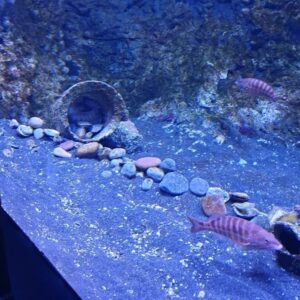
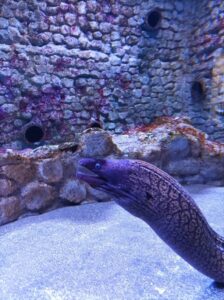
Two water tanks were of particular historical interest. The first one to be seen is the Roman moray-eel pond, a man-made habitat, similar to what can be found in Gaiola. This habitat was principally composed of Mediterranean morays and it included the presence of spiny starfishes as well as a grouper.
Another tank displayed some archaeological remains coming from the Gulf of Naples, such as an amphora providing shelter for a long conger eel.
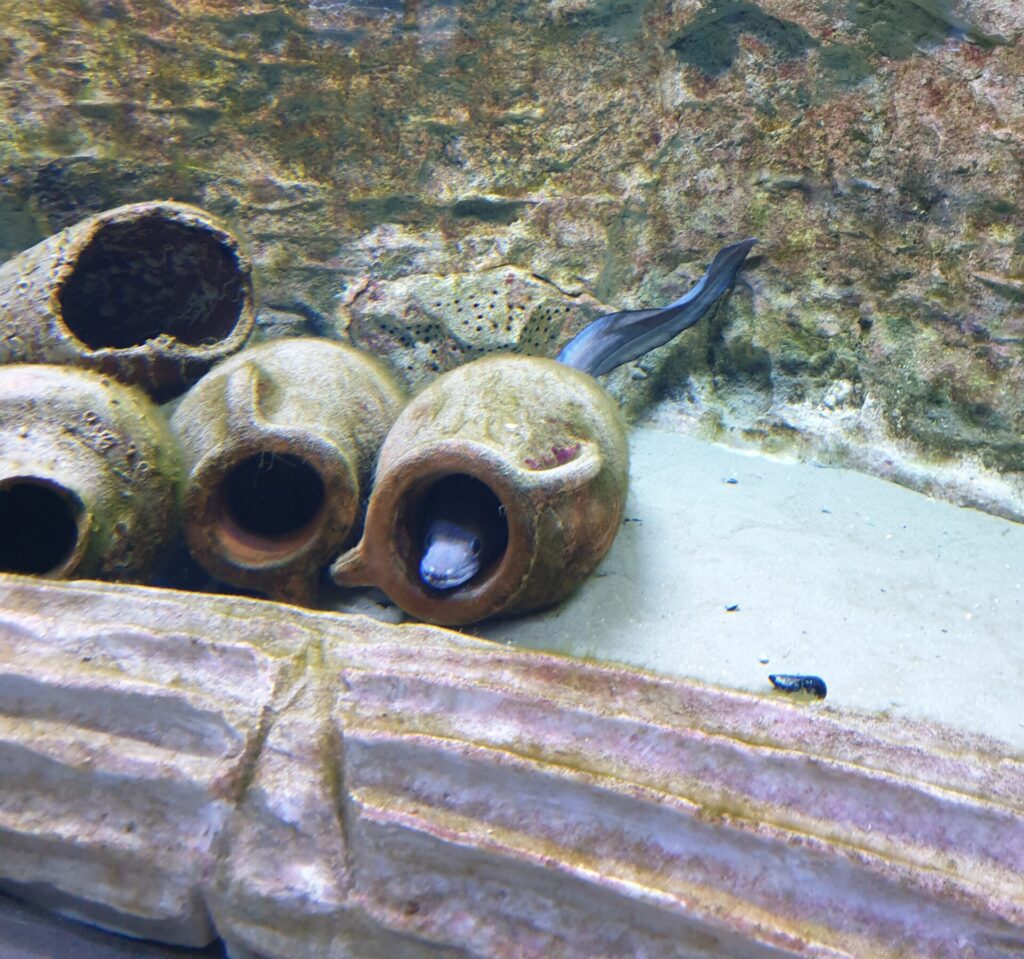
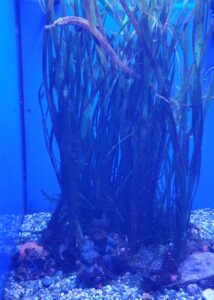
Finally, at the end of the visit, we were able to see some tanks of flat fishes (Bothus podas) and of Syngnathidae (seahorses and pipefishes) camouflaging in their habitat. This concluded a beautiful visit of this historical aquarium that represented a formidable opportunity to learn more about the marine life of the Mediterranean Sea with a focus on the Gulf of Naples.
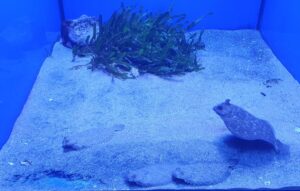
— Paul Descoeur
Category: Discovering the Territory




